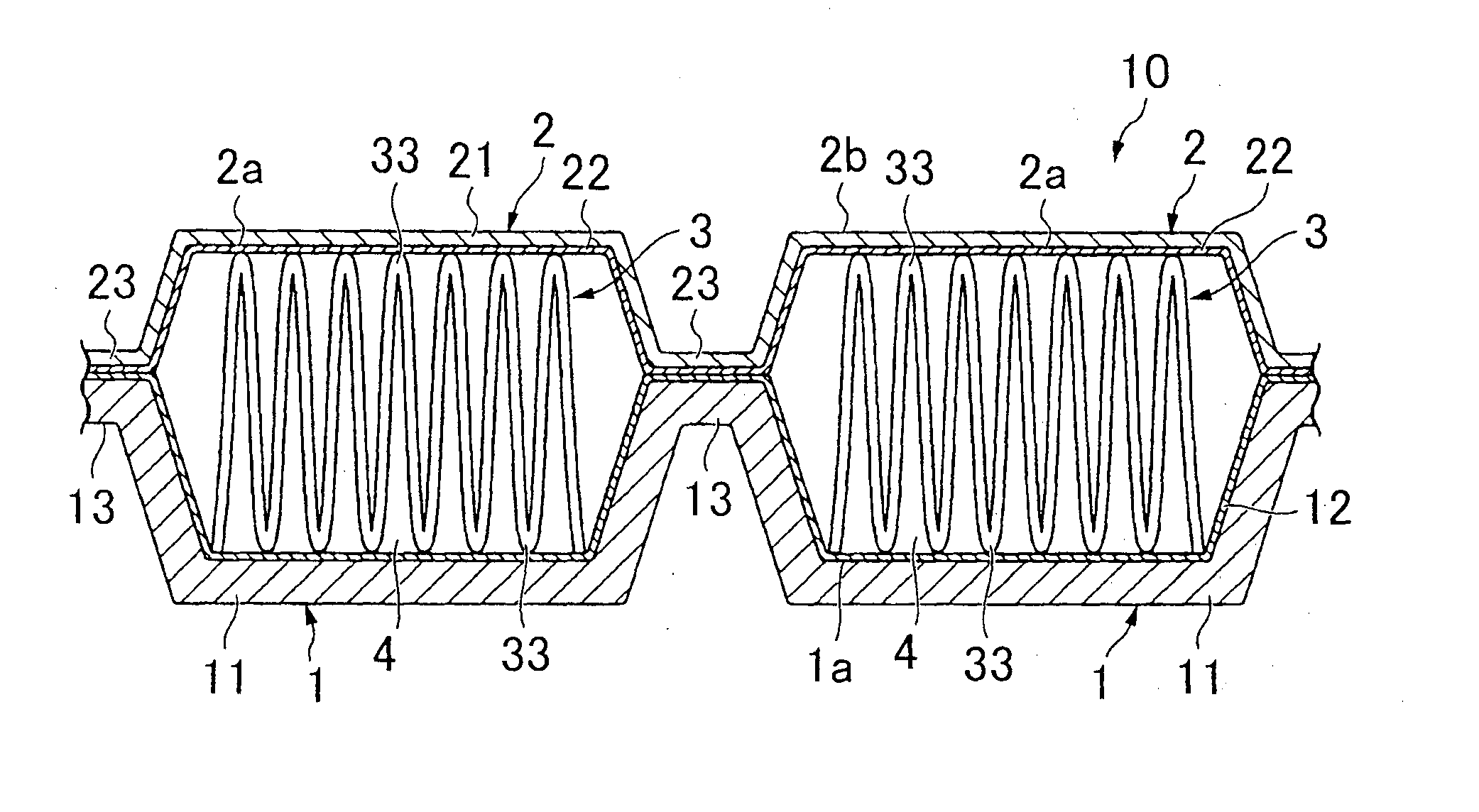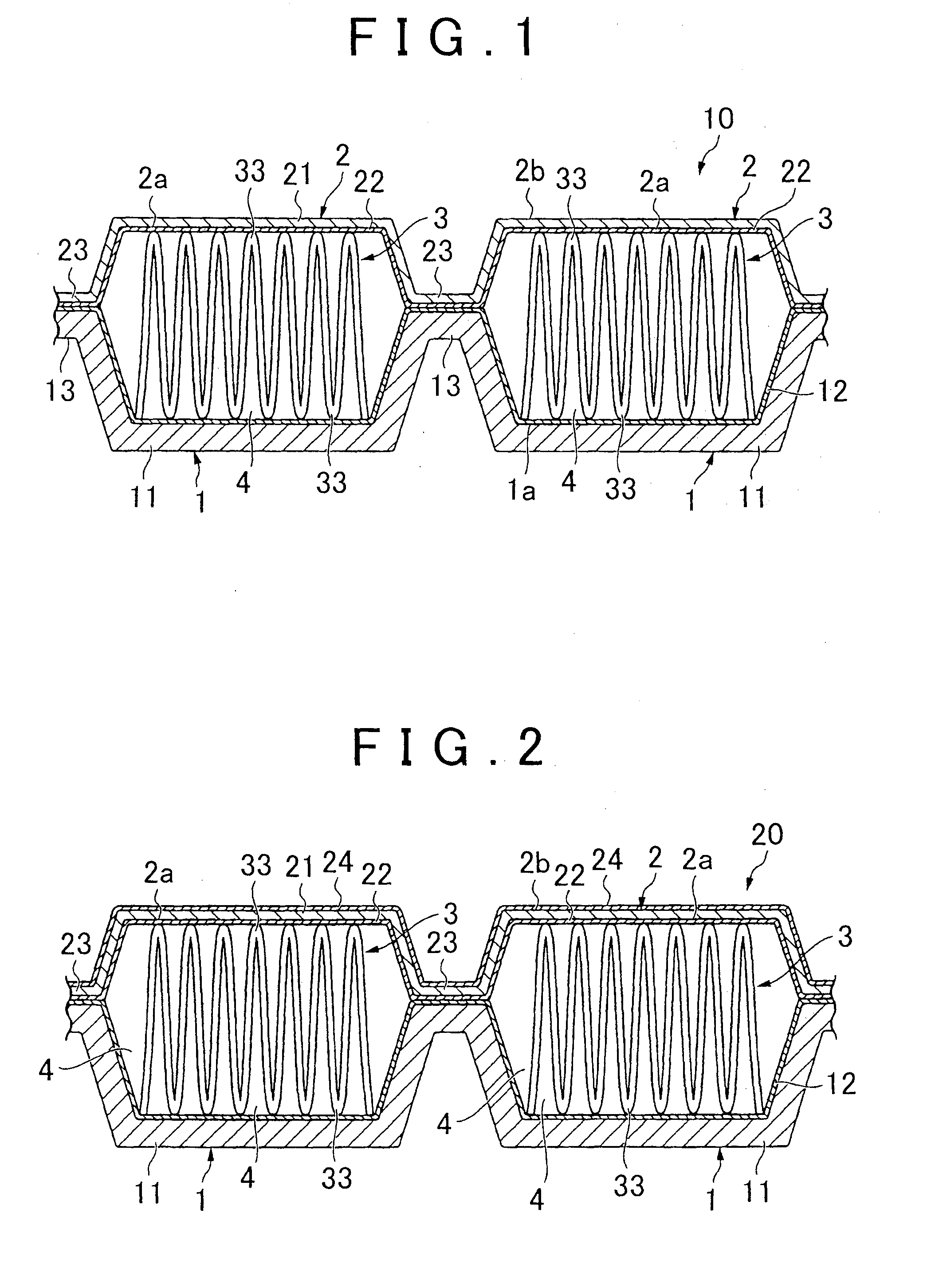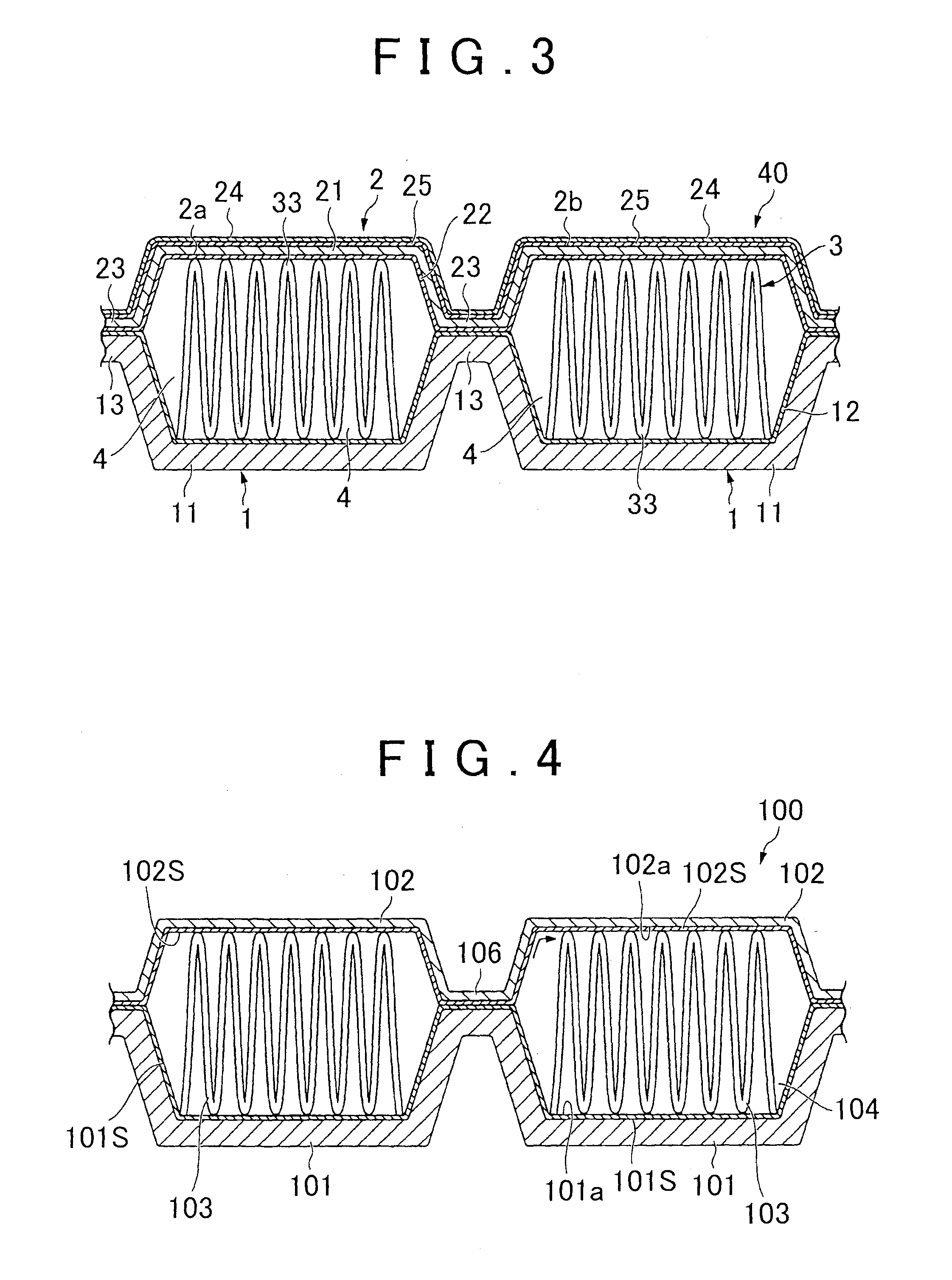Heat exchanger
a heat exchanger and heat exchanger technology, applied in the direction of semiconductor/solid-state device details, lighting and heating apparatus, etc., can solve the problems of not always achieving anticipated corrosion inhibition effect, unplanned potential gradient, etc., to improve the corrosion resistance of each brazing sheet, improve the corrosion resistance and raise the cooling efficiency of the heat exchanger 100
- Summary
- Abstract
- Description
- Claims
- Application Information
AI Technical Summary
Benefits of technology
Problems solved by technology
Method used
Image
Examples
first embodiment
[0026]A first embodiment of the heat exchanger according to the invention will be first described. FIG. 1 is a schematic cross-sectional diagram that shows the first embodiment of a heat exchanger according to the invention. The heat exchanger 10 shown in FIG. 1 is constructed by stacking a clad thick sheet material 1, which forms the bottom sheet, an inner fin 3, and a clad thin sheet material 2, which forms the top sheet, in the given sequence and, using the individual brazing filler metal layers 12, 22 disposed on the interior surfaces of the individual clad materials 1, 2, brazing the clad materials 1, 2 together at the joint regions 13, 23 and brazing the inner fin 3 to the surfaces 1a, 2a.
[0027]The clad thick sheet material (bottom sheet) 1 and the clad thin sheet material (top sheet) 2 define a passage 4 through which cooling water (coolant) flows. The clad thick sheet material 1 has a sheet shape, and a step portion (joint region) 13, which bonds with the joint region 23 of...
second embodiment
[0051]A second embodiment of the heat exchanger according to the invention will next be described. Those structures in the second embodiment that are similar to those of the previously described first embodiment will not be described in detail again. The heat exchanger of this second embodiment is configured in a manner similar to that in which the first embodiment is configured, except that, in the heat exchanger 10 in the preceding embodiment, the clad thin sheet material 2 has a sacrificial material layer in place of the brazing filler metal layer 22 and the inner fin 3 is a clad material that has a core material and a brazing filler metal layer that covers only the clad thin sheet material side of the core material or both sides of the core material.
[0052]The sacrificial material layer is disposed so as to cover the surface of the passage 4 side of the core material 21. This sacrificial material layer is formed of an aluminum alloy that contains Zn and at least one selected from...
third embodiment
[0057]A heat exchanger according to a third embodiment will next be described. No description will be provided for those structures in the third embodiment that are similar to those of the previously described first embodiment. FIG. 2 is a schematic cross-sectional diagram that shows a heat exchanger according to a third embodiment. The heat exchanger 20 in this third embodiment is configured in a manner similar to that in which the previously described first embodiment is configured, except that the clad thin sheet material 2 has a three layer structure that has a brazing filler metal layer 24 on the side opposite from the passage 4.
[0058]The brazing filler metal layer 24 is disposed so as to cover the surface 2b of the core material 21 on the side opposite from the passage 4 side. This brazing filler metal layer 24 is formed of an aluminum alloy brazing filler metal that contains 5.0 to 12.6 mass % of Si with the balance being Al and unavoidable impurities.
[0059]Effects similar to...
PUM
| Property | Measurement | Unit |
|---|---|---|
| thickness | aaaaa | aaaaa |
| thickness | aaaaa | aaaaa |
| temperature | aaaaa | aaaaa |
Abstract
Description
Claims
Application Information
 Login to View More
Login to View More - R&D
- Intellectual Property
- Life Sciences
- Materials
- Tech Scout
- Unparalleled Data Quality
- Higher Quality Content
- 60% Fewer Hallucinations
Browse by: Latest US Patents, China's latest patents, Technical Efficacy Thesaurus, Application Domain, Technology Topic, Popular Technical Reports.
© 2025 PatSnap. All rights reserved.Legal|Privacy policy|Modern Slavery Act Transparency Statement|Sitemap|About US| Contact US: help@patsnap.com



